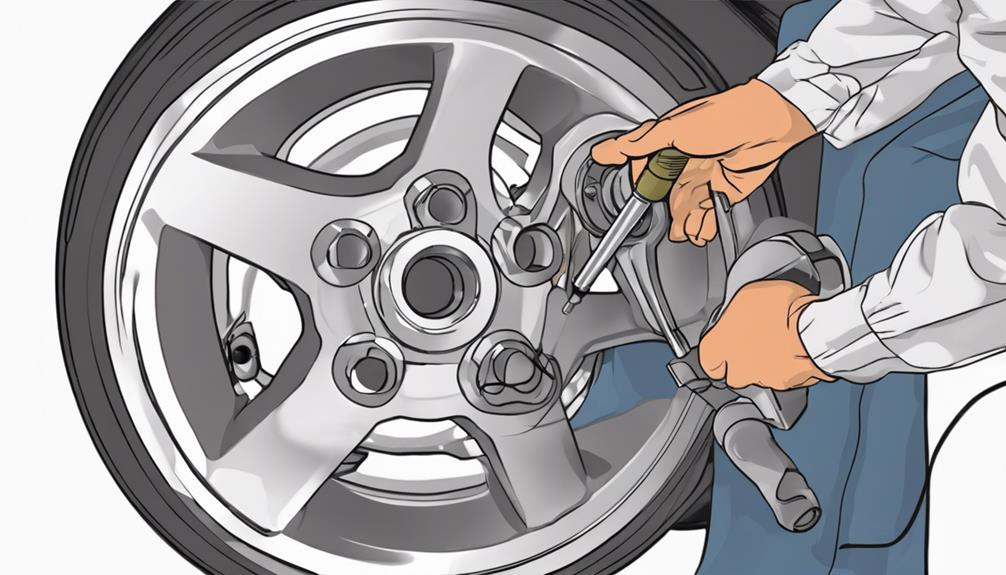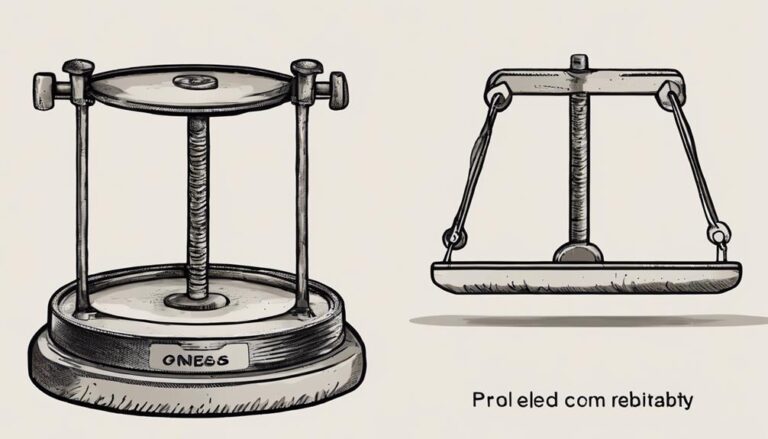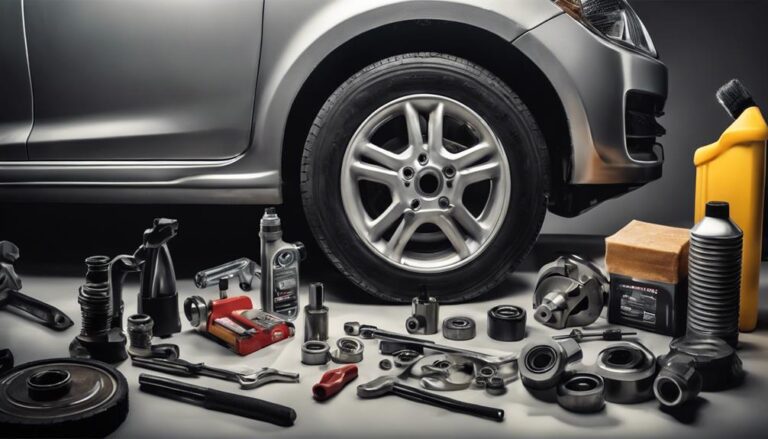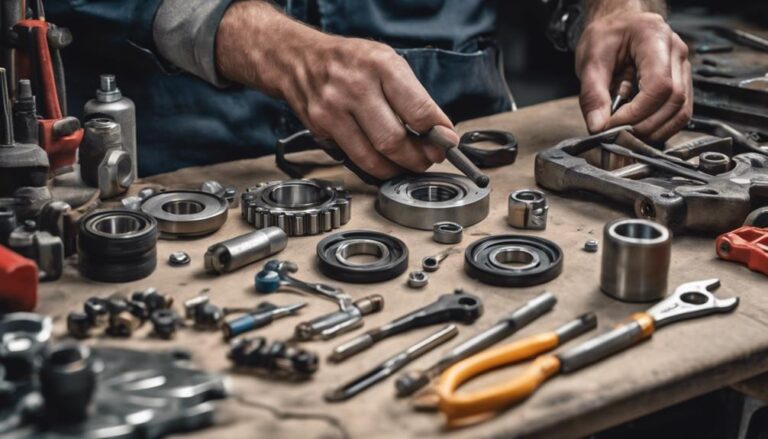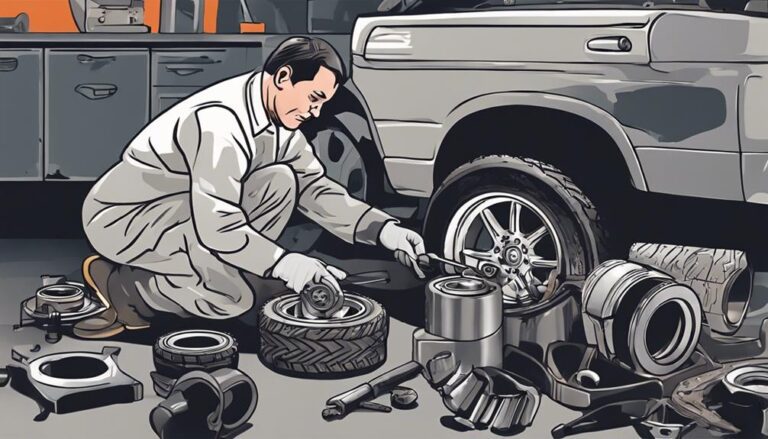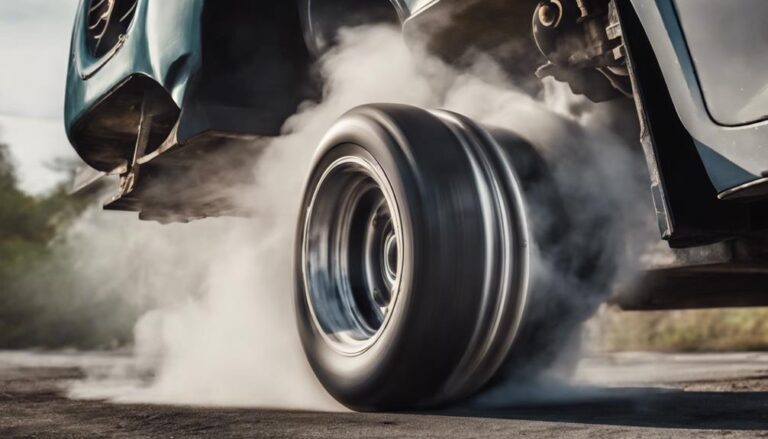Top 5 Tips for Wheel Hub Assembly Repairs
Did you know that proper wheel hub assembly maintenance can help prevent up to 54% of premature bearing failures? Ensuring your wheel hub assembly is in top condition is essential for your vehicle's safety and performance.
From securing the ABS cable to adhering to correct bolt torque specifications, each step plays a critical role in the longevity of your vehicle's wheels.
Stay tuned to discover the top 5 tips that will help you master wheel hub assembly repairs like a pro.
Key Takeaways
- Choose high-quality replacement parts meeting OEM specs for durability.
- Follow precise torque specifications from the manufacturer for proper installation.
- Grease hubs regularly with quality lithium grease to reduce friction.
- Watch for signs of wheel hub issues like noise, play, vibration, and heat.
Importance of Proper Bearing Inspection
Proper bearing inspection is essential for ensuring the best performance and safety of your wheel hub assembly. To start, detecting any play in the bearing is important. By rocking the wheel at various positions, you can identify potential wear or damage that may compromise the functionality of the assembly.
A roughness check is also imperative. Rotating the tire and feeling for any irregularities can help uncover worn bearings that require immediate replacement to maintain peak performance.
Additionally, noise analysis plays a key role in bearing inspection. Using a stethoscope on the steering knuckle enables you to pinpoint any abnormal sounds emanating from the wheel hub, indicating underlying issues. In addition, excess heat monitoring is important. Employing an infrared thermometer to track temperature variations can reveal potential friction and overheating within the wheel hub assembly, prompting further investigation.
Utilizing specific tools such as a dial indicator, stethoscope, and infrared thermometer is key to conducting a thorough bearing inspection, ensuring the longevity and efficiency of your wheel hub assembly.
Choosing High-Quality Replacement Parts
When selecting replacement parts for your wheel hub assembly, prioritize options that meet or exceed OEM specifications to guarantee top performance. Look for high-quality wheel hub bearings made from durable materials like steel or aluminum. Opting for components constructed with these materials assures longevity and reliability.
It's essential to choose brands known for their commitment to quality in the automotive industry. Consider warranty options and customer reviews to make an informed decision and assure satisfaction with the replacement parts. Verify compatibility with your vehicle's make, model, and year to guarantee a proper fit.
Proper Torque Specifications for Installation

Achieving precise torque values during the installation of a wheel hub assembly is important to guarantee secure fastening and prevent potential issues. When it comes to proper torque specifications for installation, follow these essential guidelines:
- Adhere to Manufacturer's Requirements:
Always refer to the manufacturer's specified torque settings to avoid over-tightening or under-tightening the bolts. This helps maintain the integrity of the wheel hub assembly and prevents issues down the line.
- Utilize a Torque Wrench:
Investing in a torque wrench is critical for achieving accurate torque values. This tool ensures that the bolts are tightened to the manufacturer's recommendations, reducing the risk of premature wear, component damage, or failure.
- Consult the Service Manual:
For precise torque specifications tailored to your vehicle, consult the service manual. Following these guidelines not only ensures installation safety but also helps in preventing premature wear, component damage, and maintaining prime performance standards.
Greasing Techniques for Longevity
To guarantee the longevity and best performance of your wheel hub assembly, mastering effective greasing techniques is essential. Applying high-quality lithium grease to the wheel hub bearings can greatly extend their lifespan and enhance overall performance. Proper greasing plays a critical role in reducing friction and preventing heat buildup, ultimately protecting the bearings from premature wear and damage. It is important to apply the grease evenly across all bearing surfaces to make sure smooth rotation and consistent lubrication. Following regular greasing maintenance intervals recommended by the manufacturer is key to avoiding costly repairs and replacements in the future. However, over-greasing or under-greasing should be avoided at all costs, as they can lead to issues such as overheating, noise, and premature failure of the wheel hub assembly.
| Greasing Techniques | Importance | Effects |
|---|---|---|
| High-quality lithium grease | Extends lifespan | Enhances performance |
| Even application | Reduces friction | Prevents heat buildup |
| Regular maintenance | Prevents costly repairs | Ensures consistent lubrication |
Signs of Potential Wheel Hub Issues

Inspect the wheel hub assembly for potential issues by observing common symptoms such as grinding noise, vibration, wheel wobbling, ABS light illumination, excessive play, increased steering wheel vibration, or heat emanating from the hub area after driving. These signs can indicate various problems with the wheel hub assembly that may require attention. To guarantee your safety and the proper functioning of your vehicle, it's essential to address these symptoms promptly.
Here are three key signs to look out for:
- Grinding Noise: Unusual grinding noises coming from the wheel hub area can signify worn-out bearings or other internal components.
- ABS Light Illumination: If your ABS light comes on, it could be a warning sign of a malfunctioning wheel hub sensor or related ABS components.
- Excessive Play: Experiencing excessive play or movement in the wheel when lifted off the ground may indicate significant wear or damage within the wheel hub assembly.
Frequently Asked Questions
Do You Need to Grease a New Hub Assembly?
When dealing with a new hub assembly, remember that it comes pre-greased for proper lubrication. Avoid adding extra grease to prevent over-greasing, which can lead to issues like heat buildup and premature wear. Follow manufacturer guidelines for maintenance.
How Do You Test a Bad Wheel Hub Assembly?
To test a bad wheel hub assembly, check for excessive play. Listen for grinding, clicking, or humming noises. Feel for vibrations in the steering wheel or floor. Look for wheel wobbling or uneven tire wear.
How Can I Make My Wheel Bearings Last Longer?
To make your wheel bearings last longer, focus on proper maintenance, using recommended lubrication techniques, taking preventative measures, ensuring material durability, following correct installation methods, considering environmental factors, adjusting driving habits, monitoring temperature effects, respecting load capacity, and maintaining a thorough inspection routine.
Can You Over Tighten a Hub Assembly?
You can over-tighten a hub assembly, leading to bearing failure and distortion. Follow proper torque specs for safe driving. Avoid damage by using a torque wrench within tightening limits. Guarantee proper installation for longevity.
Conclusion
To summarize, remember to treat your wheel hub assembly with the care and attention it deserves. Neglecting proper maintenance can lead to costly repairs and potential safety hazards.
So, make sure to follow these top 5 tips diligently to keep your vehicle running smoothly and avoid wheel hub woes. After all, a well-maintained wheel hub assembly is the key to a smooth ride and happy car!

